The 7 most important tips to increase the battery life of your radio remote control


If you are a crane operator ,a crane manufacturer or a crane owner ,
It is frustrating when one of your wireless crane radios runs out of battery in the middle of a lift.
You do not want to go and find a new battery when you have 5 ton load hanging from your single girder
EOT crane in the middle of the production run.
While electronic products are becoming more sophisticated day by day, saving battery power and
using extremely high quality radio remote controls has become essential .
Designing a radio system requires a lot of attention to detail.
This article may not be as in depth but read ahead to see the 7 most important tips to increase
battery life of your radio remote control.
So let's get started.
Emergency Switch :
Did you know that your emergency button also doubles
up as your battery saver button. As soon as you hit your emergency button the Transmitter sends an
emergency stop command to Receiver, waits for the acknowledgement from the receiver and goes into Zero
Power Mode aka Sleep mode.
It is almost as if the battery is disconnected. The transmitter will not respond to any of your push
button presses. All the internal circuitry along with the radio frequency components are disabled.
The transmitter will only respond to the emergency button release.
So, whenever you are not using your radio remote control, its best to keep the Emergency Switch pressed.
It increaseS the safety of the crane machinery and saves a lot of battery power.
Orientation :
To save maximum amount of battery power,
The Transmitter should send a radio signal with minimum amount of power required for the receiver for a
valid packet reception.
A Transmitter with a vertical polarized antenna will send signals to a Receiver
with vertically polarized antenna with maximum power efficiency. A horizontal polarized antenna sees a
loss of upto 20db when transmitting to a RX with vertically polarized antenna. Be it an RTG crane or
single girder EOT crane, Receiver placement plays vital role for better reception of signals.According to
our Research and Development Department, It is definitely best to have an Antenna polarization Diversity
feature ,where your receiver can have two antennas 90 degrees from each other.
Antenna Diversity takes
care of polarization mismatch as well as deep fades. This makes the software and hardware more complicated ,
but reduces the Packet error rate by 10%.Instead of linearly polarized antennas in your transmitter and
receiver, you or the manufacturer of the radio system can use circular polarized antennas,
but the transmitter will have to transmit more power when using circular polarized antennas for
transmission and reception.
One more additional tip, keep your receiver as far away from metal as you can,
because nearby metal can cause an antenna to detune, And a detuned antenna is definitely not a good antenna
because it can alter the return loss at the transmission frequency by more than 20 db.
Antennas can detune significantly if near a metallic crane control panel.Have a look at the figure below.
A very good radio system, will minimize the amount of packet retransmissions thereby reducing the overall battery consumption.
Battery Cover :
When you use your radio remote control always make sure that your battery cover is in right position with its screws tightly fastened. It will help to protect your battery and battery contacts from external environment. Your battery and Battery Contact will remain free of dust.
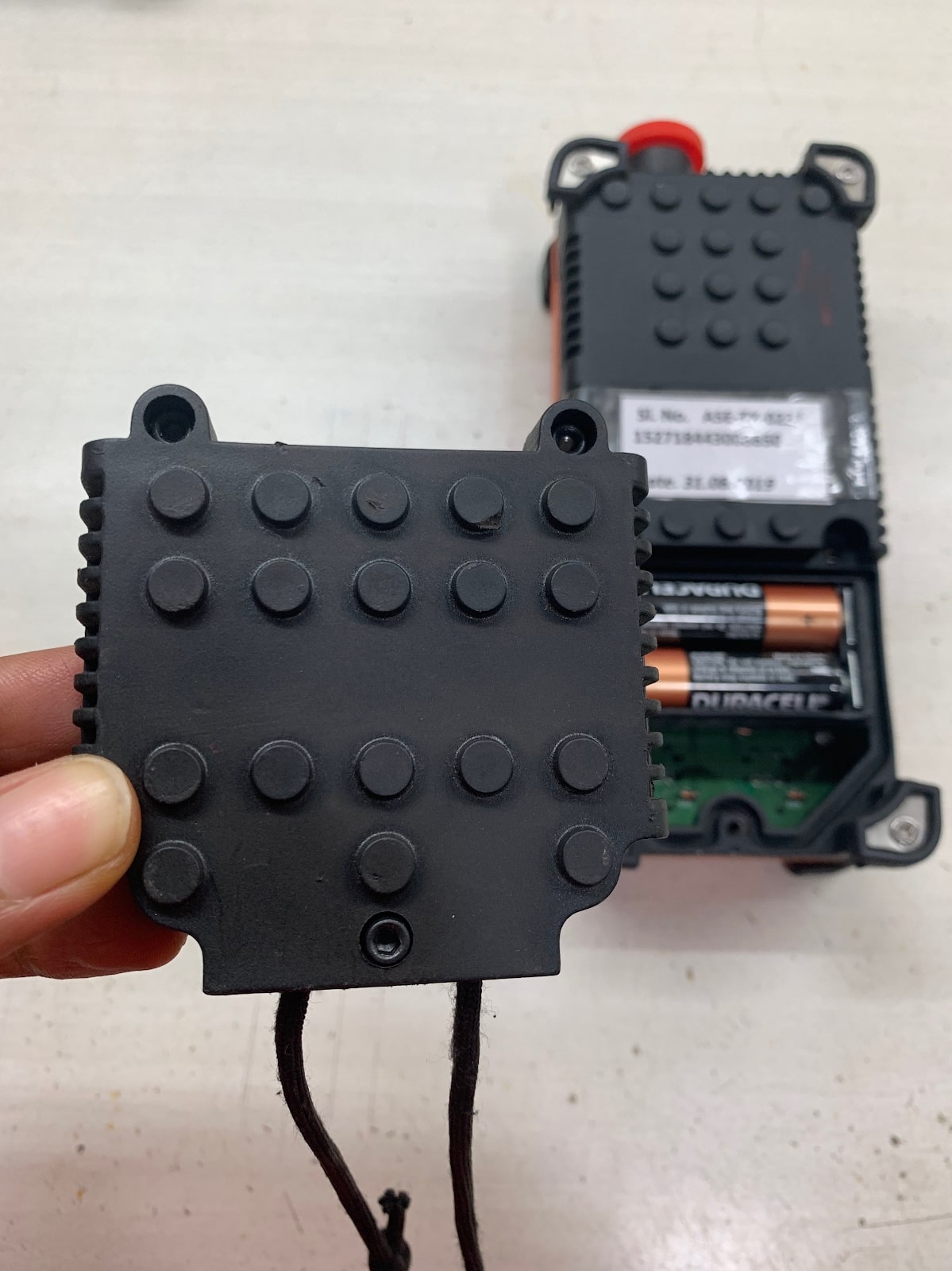
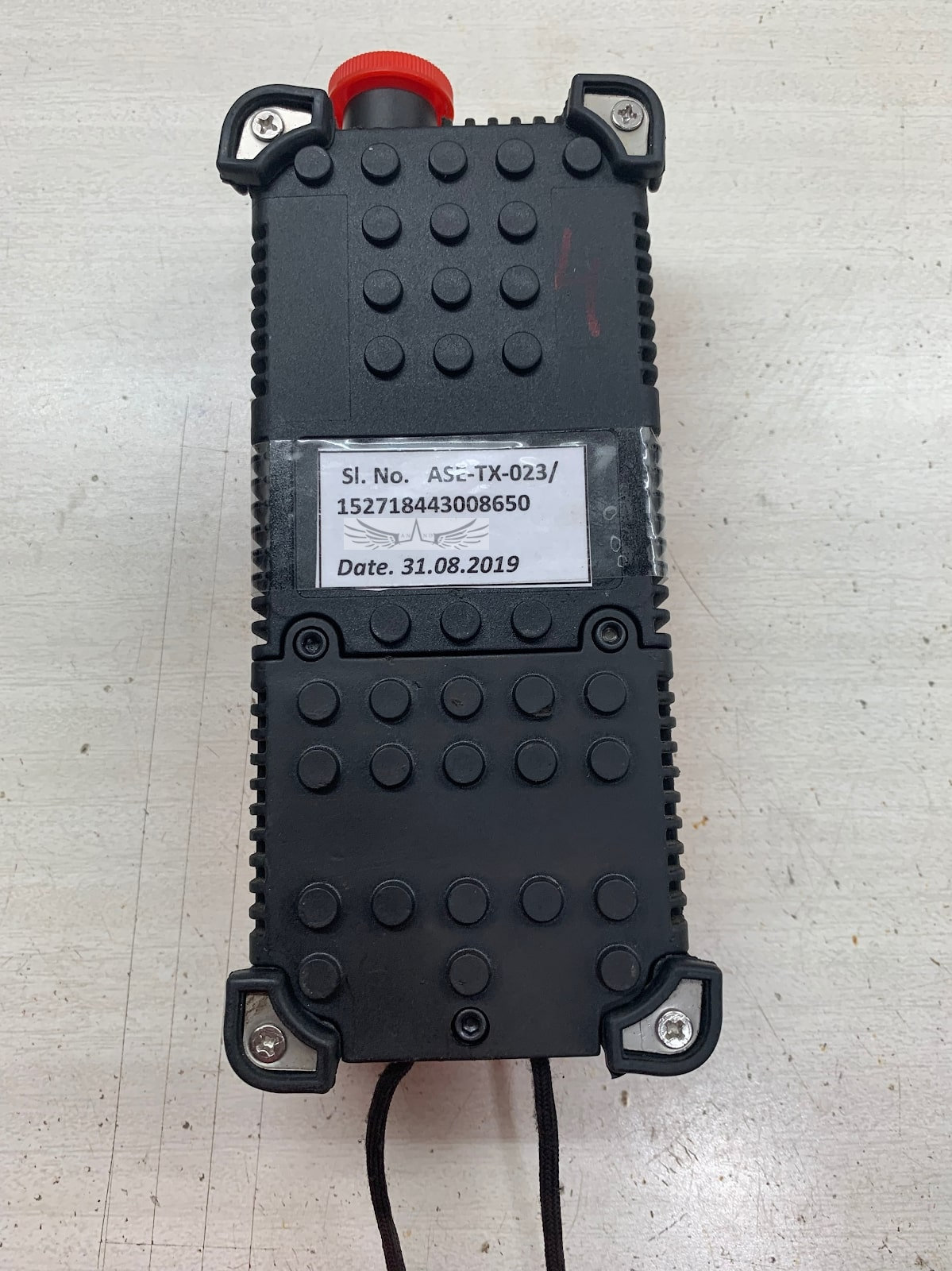
Best to use plated battery contacts like the one shown in the photo, Battery should perfectly press against a good quality spring and battery contact.
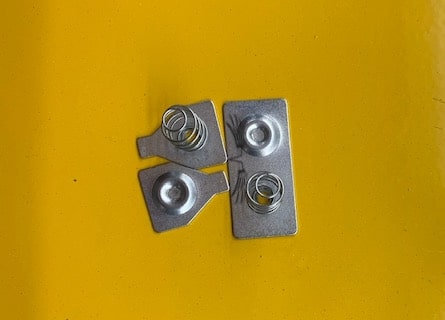
If your battery contacts have started to rust, you can use a cotton swab with some thinner or Isopropyl alcohol or vinegar solution to remove the rust. Best to just replace the battery terminals and replace the battery itself.
Using Low power MicroControllers, Radio transmission Integrated circuits and high quality Components :
The software and hardware in your radio system should work in
sync. Depending on your usage,most of the time your radio remote is in idle condition.
Since your radio is idle almost 70% of the time, the power consumption of your crane radio in idle condition
is more important than the power consumption during communication.
The microcontroller and the radio integrated circuits should immediately go into the lowest power consumption
more when not in use. The power consumption of your portable radio will define how long the batteries will last.
Putting your entire circuit into its lowest power consumption mode is an art in itself.
For embedded software developers this means using shutting down the clocks of all of the modules of your
microcontroller such as the ADC, Timers, Disabling the Brown out Detection, unused port pins etc.
For the hardware designer, you have to make sure your pull up and pull down resistors are in order and
you are using the lowest leakage high quality capacitors.
Electronic component selection will play a key role in the total power consumption during idle period.
You know when you have done something right, when the total power consumption of your circuit is less
than the self discharge rate of your battery.
For an RF engineer, the tradeoff in terms of the Channel Bandwidth,channel spacing, number of channels ,
The Data rate, the transmission frequency and the rf protocol , all of these points will affect the energy
consumed per bit transmitted.
RF Data Rate: The Data rate of your rf transmission plays a vital role in power consumption.
Suppose, at the press of a push button, the radio transmitter needs to send 24 bytes of data to the receiver.
If the Data rate of transmission is 250 Kbps then the power consumption calculation is as follows:
Bytes to be transmitted = 24 bytes = 24 * 8 bits = 192 bits
Data Rate = 250kbps = 250 000 bits per second
Time for transmission = total number of bits/Bits per second = 192/250000 = 768 micro seconds
Therefore, your radio will transmit for 768 microseconds per button press.
Your average power consumption = transmission power level * 768 Microseconds.
If the Data rate was Slower, for example 80 kbps.
Then your average power consumption = transmission power level * 192/80000
= transmission power level * 2400 micro seconds.
Your total average power consumption has increased by three times for the same amount of transmitted power
by reducing data rate by three times.
Receiver sensitivity also affects the power consumption.
Higher receiver sensitivity means more receiver performance and better the transmission distance.
For the same distance between transmitter and receiver, a transmitter has to transmit less power to
a receiver with sensitivity of -101dbm compared to a receiver with sensitivty of -90 dbm.
One more very important point:
Whenever your radio remote transmitter runs out of battery power for the first time of its use,
don't just throw away the battery.
Use a multimeter and see how far down the battery voltage has
gone for each individual cell. Any great electronic product design , will try to extract the
maximum amount of power from its batteries. Voltage of a non rechargeable AA Alkaline battery ranges
from approximately 1.6v (when new) to around 1v (when almost depleted).
So when your crane radio
runs out of power for the first time, use a multimeter and check the voltage of each individual
alkaline battery. If its around 1v, then you have got yourself a very good product,But if the
multimeter shows around 1.3 or even 1.4v, you know you have more than 50% of power still left in
your batteries.
Distance :
One of the main features of a RF system is its maximum communication distance for a reliable wireless link between the transmitter and the receiver. Greater the distance, greater is the path loss. Path loss is the amount of transmitted radio power lost as it travels towards the receiver.
There is a neat formula for it.
Path loss = 20log10(4*pi*Distance)/(Wavelength).
According to the formula, Distance and Wavelength
have a great effect on the path loss. Increase the distance and you thereby increase the path loss.
Formula for wavelength of a signal is given by the following formula:
Wavelength = Speed of light/Carrier Frequency
Since wavelength and frequency are inversely proportional, increase the wavelength( reducing the frequency)
will reduce your path loss .Which means, for the same amount of transmitted power, a 2.4Ghz will
theoretically face more path loss than a 865Mhz system.
To account for this path loss, your receiver needs to
increase its receiving sensitivity, which decreases the Signal to Noise ratio because your receiver is
now more sensitive to Noise as well. So the radio remote control system is basically a trade off between
the amount of transmitted power and receiver sensitivity for best performance.
Distance between the TX & RX makes a huge difference
to battery life. If your remote control has auto power adjustment, as soon as you press a key, first
the TX sends a signal to RX with the lowest power and wait for acknowledgment from the RX. If there
is no acknowledgment the TX increases its power by 20% and sends the signal again. It does this
increment until the RX receive and send an acknowledgement. This is how TX fine tune its power level to
save maximum amount of power.
Mixing Old and New Batteries :
Alkaline Batteries are 1.5V to 1.65V when new. As they become old their voltage drops till around 0.8V to 1V when the completely depleted. Two of the alkaline batteries are put in a series connection to create a total of 3V to 3.2V when new. When your batteries run out of power never replace only one old battery with a new one. There is a serious chance of your alkaline batteries leaking potassium hydroxide agent. If your battery leaks while in use it could damage your radio remote control.

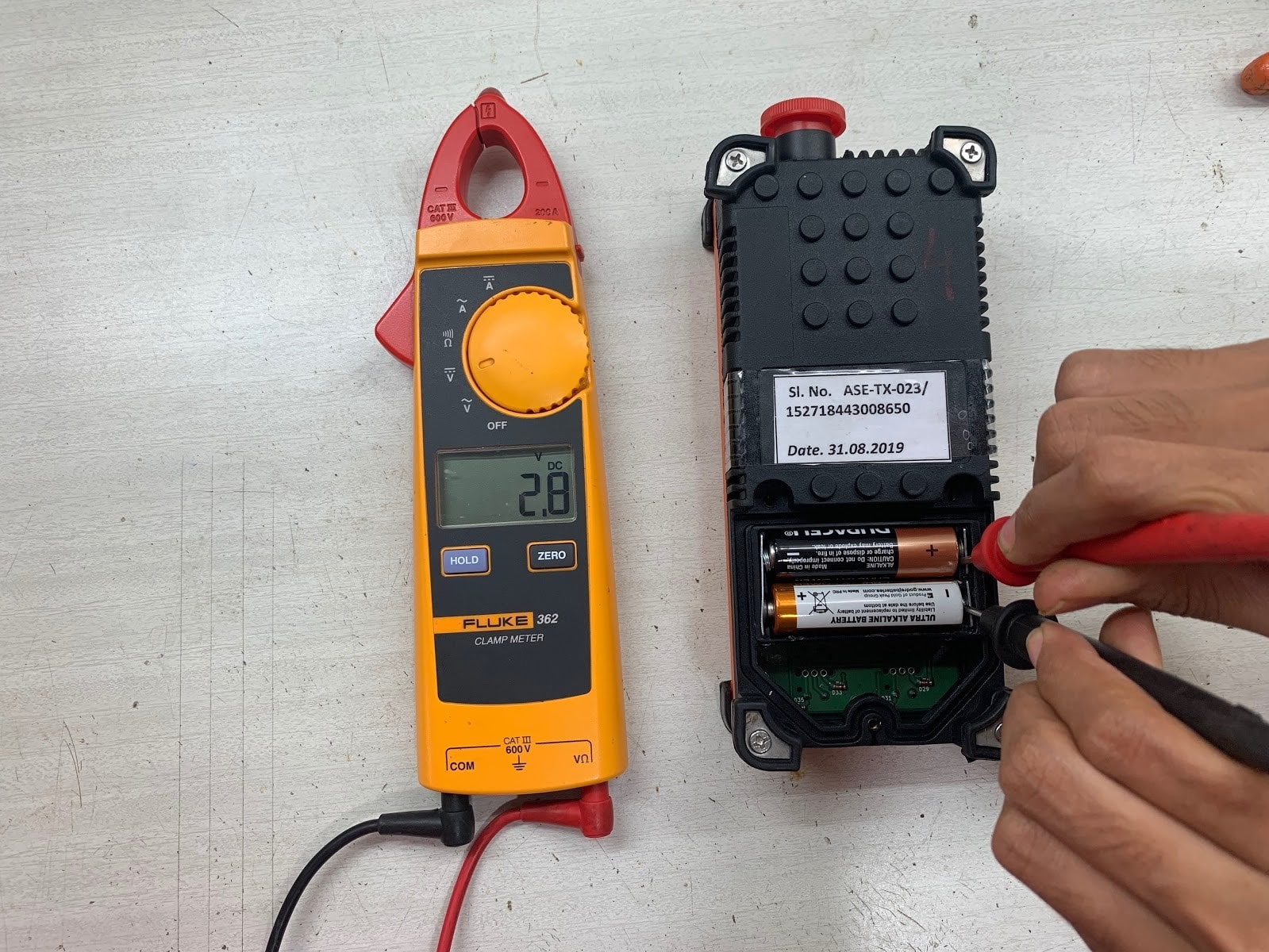
Check the Manufactured or Packaged Date of your Battery :
Since alkaline batteries have a self discharge mechanism buying newly made batteries though unused , will make your device run longer.
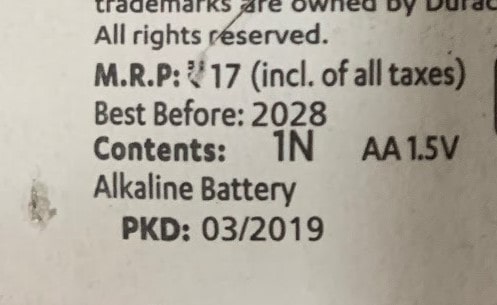
Also, since crane radio remotes are used in industrial environments, your spare batteries will also be stored in a store room. If the ambient temperature of the storage location is high, the self discharge rate of the alkaline battery increases. So, better to store your batteries in at normal room temperature.
Conclusion :
Alkaline batteries can last many years if taken care of. For this reason if you pay attention to these important battery saving tips and buy the correct crane radio, we guarantee that your crane radio will run longer thereby saving you time and money. One last tip, If your radio remote control was bought a few years ago, chances are that the company you bought it from has an improved version of the software which will be better at saving power. So asking the manufacturer for a software update might add months to the battery life.
Question :
How long your batteries have lasted and what tricks or hacks you have used to make your battery last years in any of your radio devices? Let us know in the comments below.
Follow us on YouTube.